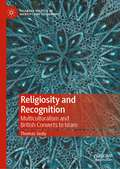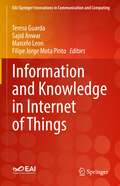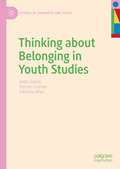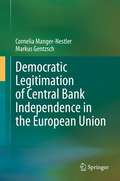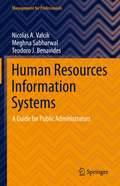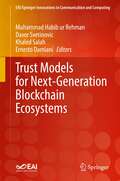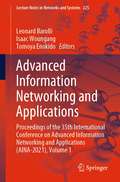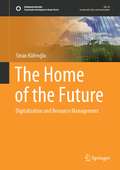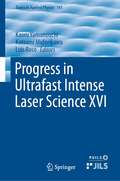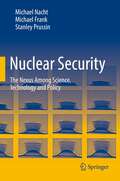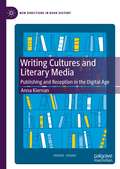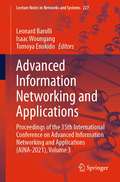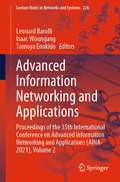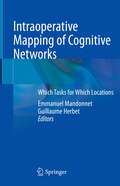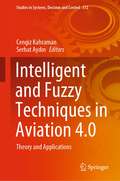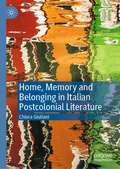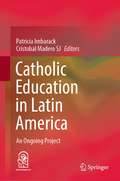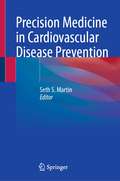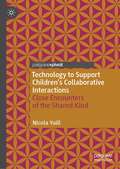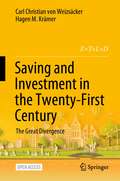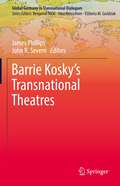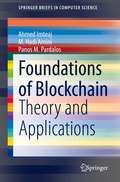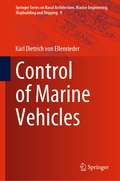- Table View
- List View
Religiosity and Recognition: Multiculturalism and British Converts to Islam (Palgrave Politics of Identity and Citizenship Series)
by Thomas SealyThis book argues that multiculturalism remains a relevant and vital framework through which to understand and construct inclusive forms of citizenship. Responding to contemporary ethnic and religious diversity in European states and the position of religious minorities, debates in multiculturalism have revitalized discussion of the public role of religion, yet multiculturalism has been increasingly challenged in both political as well as academic circles. With a focus on Britain and through a study of the narratives of British converts to Islam, this book engages in debates centered around multiculturalism, particularly on the issues of identity, recognition, and difference. Yet, it also identifies and interrogates multiculturalism’s shortcomings in relation to specifically religious identities and belonging. In a unique and innovative analysis, this book combines a discussion of multiculturalism in Britain with insights from political theology. It juxtaposes multiculturalism’s concepts of ethno-religious identity and recognition with the notions of religiosity and hospitality to offer a new perspective on religious identity and the implications of this for thinking with and about multiculturalism and multicultural social and political relations.
Information and Knowledge in Internet of Things (EAI/Springer Innovations in Communication and Computing)
by Teresa Guarda Marcelo Leon Sajid Anwar Filipe Jorge Mota PintoThis book provides readers with an insight into information and knowledge in the Internet of Things, in particular an investigation of data management and processing, information extraction, technology, knowledge management, knowledge sharing, knowledge co-creation, knowledge integration, and the development of new intelligent services available anytime, anywhere, by anyone. The authors show how IoT enables communication and ubiquitous computing between global citizens, networked machines and physical objects, providing a promising vision of the future integrating the real world of knowledge agents and things with the virtual world of information.
Thinking about Belonging in Youth Studies (Studies in Childhood and Youth)
by Johanna Wyn Anita Harris Hernan CuervoThis book takes a global perspective to address the concept of belonging in youth studies, interrogating its emergence as a reoccurring theme in the literature and elucidating its benefits and shortcomings. While belonging offers new alignments across previously divergent approaches to youth studies, its pervasiveness in the field has led to criticism that it means both everything and nothing and thus requires deeper analysis to be of enduring value. The authors do this work to provide an accessible, scholarly account of how youth studies uses belonging by focusing on transitions, participation, citizenship and mobility to address its theoretical and historical underpinnings and its prevalence in youth policy and research.
Democratic Legitimation of Central Bank Independence in the European Union
by Cornelia Manger-Nestler Markus GentzschThis short monograph examines the tense relationship between central bank independence and democratic legitimation, which has changed as the European Central Bank (ECB) has been entrusted with new tasks and faced unprecedented challenges. The financial and sovereign debt crisis, in particular, has affected the ECB's position within the Economic and Monetary Union without substantial changes in the Union's legal framework. However, the evolution of an institution primarily obligated to maintain price stability into an actor involved in sustaining financial stability, performing banking supervision and supporting economic policy raises the question of whether the high level of autonomy granted to the ECB is justified with regard to the principle of democracy that demands adequate accountability and control. This book identifies requirements for the democratic legitimation of central bank action in relation to specific tasks. Further, it analyses other scales of independence encountered in EU law in order to allow readers to gain a better conceptual understanding of central bank independence.
Human Resources Information Systems: A Guide for Public Administrators (Management for Professionals)
by Nicolas A. Valcik Meghna Sabharwal Teodoro J. BenavidesThis book provides an introduction to Human Resource Information Systems (HRIS) for those in the public administration field. At the intersection between human resource management and information technology, HRIS is often the key to having and maintaining the personnel data that is essential for hiring and recruitment, strategic planning and analysis, and legal requirements in most public organizations. This book describes what an HRIS system is, what the functionality of such a system should be, and outlines the practical aspects of an HRIS. It also compares the different aspects of human resources in public organizations, non-profit organizations, and private corporations, and how differences across organizations may influence the functionality requirements of the HRIS. Finally, the volume contains both an organizational theory component, which frames how an HRIS interacts with an organization both from a functional standpoint and a reporting standpoint. The book includes a practical component, which includes real-world case studies that illustrate the advantages and pitfalls to implementing an HRIS enterprise system. Providing a thorough introduction to HRIS for both academics and practitioners, this volume is appropriate for researchers, graduate students, and practitioners in the fields of public administration, higher education administration, information systems, computer science, and human resources.
Trust Models for Next-Generation Blockchain Ecosystems (EAI/Springer Innovations in Communication and Computing)
by Khaled Salah Ernesto Damiani Muhammad Habib ur Rehman Davor SvetinovicThis book discusses the trust models for next-generation Blockchain ecosystems. The book provides a comprehensive discussion on various trust factors involving security, anonymization, reputation, governance, economic models, and other relevant determinants. The book covers various topics in breadth and depth. In addition, it sets the foundation to involve the readers in understanding the core theories supplemented with technical and experimental discussion. The book starts by laying out the foundations of trust models in Blockchain ecosystems. The authors then provide a study of existing trust models Blockchain networks. They then provide identification of trust factors and discuss each trust factor. The book concludes with a future outlook of trust-enabling Blockchain ecosystems.Outlines the trust models for next-generation Blockchain ecosystems;Covers the trust issues in various Blockchain ecosystems running in public, private, consortium, and cloud environments;Features issues such has privacy, security, scalability, and requirements in Blockchain.
Silent Film Performance: Dramatic Bodies on Screen
by Elisabetta GirelliThis book provides a groundbreaking exploration of silent film performance. It combines close reading of silent screen acting with theoretically informed analysis, stressing the overlap between different performative arts, such as film and stage acting, dance, mime, and pantomime. The boundary between silent and sound films is also challenged. Anna Pavlova’s acting in The Dumb Girl of Portici is read through Freud’s work on the uncanny, disability studies, and notions of intermediality. Vladimir Mayakovsky’s performance in The Young Lady and the Hooligan is approached as a silent soliloquy and a representation of loneliness. Ivan Mozzhukhin’s tour de force in The Late Mathias Pascal is discussed through a queer failure lens, while Pola Negri’s presence in Hotel Imperial is analysed with the aid of texts on wartime anxiety. Harald Kreutzberg’s stunning number in Paracelsus is examined in the light of theories of mime and pantomime, arguing for its subversive potential in a Third Reich sound film.
Advanced Information Networking and Applications: Proceedings of the 35th International Conference on Advanced Information Networking and Applications (AINA-2021), Volume 1 (Lecture Notes in Networks and Systems #225)
by Isaac Woungang Leonard Barolli Tomoya EnokidoThis book covers the theory, design and applications of computer networks, distributed computing and information systems. Networks of today are going through a rapid evolution, and there are many emerging areas of information networking and their applications. Heterogeneous networking supported by recent technological advances in low-power wireless communications along with silicon integration of various functionalities such as sensing, communications, intelligence and actuations is emerging as a critically important disruptive computer class based on a new platform, networking structure and interface that enable novel, low-cost and high-volume applications. Several of such applications have been difficult to realize because of many interconnections problems. To fulfill their large range of applications, different kinds of networks need to collaborate, and wired and next-generation wireless systems should be integrated in order to develop high-performance computing solutions to problems arising from the complexities of these networks.The aim of the book “Advanced Information Networking and Applications” is to provide latest research findings, innovative research results, methods and development techniques from both theoretical and practical perspectives related to the emerging areas of information networking and applications.
New Medical Diagnosis Models Based on Generalized Type-2 Fuzzy Logic (SpringerBriefs in Applied Sciences and Technology)
by Oscar Castillo Patricia Melin Emanuel Ontiveros-RoblesThis book presents different experimental results as evidence of the good results obtained compared with respect to conventional approaches and literature references based on fuzzy logic. Nowadays, the evolution of intelligence systems for decision making has been reached considerable levels of success, as these systems are getting more intelligent and can be of great help to experts in decision making. One of the more important realms in decision making is the area of medical diagnosis, and many kinds of intelligence systems provide the expert good assistance to perform diagnosis; some of these methods are, for example, artificial neural networks (can be very powerful to find tendencies), support vector machines, that avoid overfitting problems, and statistical approaches (e.g., Bayesian). However, the present research is focused on one of the most relevant kinds of intelligent systems, which are the fuzzy systems. The main objective of the present work is the generation of fuzzy diagnosis systems that offer competitive classifiers to be applied in diagnosis systems. To generate these systems, we have proposed a methodology for the automatic design of classifiers and is focused in the Generalized Type-2 Fuzzy Logic, because the uncertainty handling can provide us with the robustness necessary to be competitive with other kinds of methods. In addition, different alternatives to the uncertainty modeling, rules-selection, and optimization have been explored. Besides, different experimental results are presented as evidence of the good results obtained when compared with respect to conventional approaches and literature references based on Fuzzy Logic.
The Home of the Future: Digitalization and Resource Management (Sustainable Development Goals Series)
by Sinan KüfeoğluThis book presents an in-depth study to show that a sustainable future urban life is possible. To build a safer and more sustainable future, as humankind, we would like to use more renewable energy, increase energy efficiency, reduce our carbon and water footprints in all economic sectors. The increasing population and humans’ ever-increasing demand for consumption pose another question whether the world’s resources are sufficient for present and future generations. Fair access to water, energy, and food is the objective for all. In line with the United Nations Sustainable Development Goals, scientists, researchers, engineers, and policymakers worldwide are working hard to achieve these objectives. To answer all these challenges, we would like to introduce the core of Smart Cities of the future, the building block of the future’s urban life: Open Digital Innovation Hub (ODIH). ODIH will serve as the ‘Home of the Future’, a fully digitalised and smart, self-sustaining building that answers all the motivation we highlight here. In ODIH, we introduce a living space that produces its water, energy, and food by minimising carbon and water footprints thanks to the Internet of Things, Artificial Intelligence, and Blockchain technologies. It will also serve as an open innovation environment for start-ups and entrepreneurs who wish to integrate their solutions into the infrastructure of ODIH and test those in real-time. We believe this will be a true open innovation test-bed for new business models.
Progress in Ultrafast Intense Laser Science XVI (Topics in Applied Physics #141)
by Kaoru Yamanouchi Luis Roso Katsumi MidorikawaThis book covers a broad range of topics from the interdisciplinary research field of ultrafast intense laser science, focusing on atoms and molecules interacting with intense laser fields, laser-induced filamentation, high-order harmonics generation, and high power lasers and their applications. This sixteenth volume features contributions from world-renowned researchers, introducing the latest reports on probing molecular chirality with intense laser fields, and the most recent developments in the Shanghai Superintense Ultrafast Laser Facility project.The PUILS series delivers up-to-date reviews of progress in this emerging interdisciplinary research field, spanning atomic and molecular physics, molecular science, and optical science, which has been stimulated by the recent developments in ultrafast laser technologies. Each volume compiles peer-reviewed articles authored by researchers at the forefront of each of their own subfields of ultrafast intense laser science. Every chapter opens with an overview of the topics to be discussed, so that researchers unfamiliar to the subfield, especially graduate students, can grasp the importance and attractions of the research topic at hand; these are followed by reports of cutting-edge discoveries.
Nuclear Security: The Nexus Among Science, Technology and Policy
by Michael Frank Michael Nacht Stanley PrussinThis textbook is the first comprehensive and systematic account of the science, technology and policy issues associated with nuclear energy and nuclear weapons. Throughout their account of the evolution of nuclear policy, from its origin to the early Trump presidency, the authors interweave clear technical expositions of the science and technology that underpin and constrain it. The book begins by tracing the early work in atomic physics, the discovery of fission, and the developments that led to the Manhattan Project and the delivery of atomic bombs against Japan that ended World War II. It follows the initial failed attempts at nuclear disarmament, the onset of the Cold War nuclear arms competition, and the development of light water reactors to harness nuclear energy for electric power generation. The authors thoroughly unpack the problem of nuclear proliferation, examining the strategy and incentives for states that have and have not pursued nuclear weapons, and providing an overview of the nuclear arsenals of the current nuclear weapon states. They trace the technical, political and strategic evolution of deterrence, arms control and disarmament policies from the first attempts for an Outer Space Treaty in 1957 through the new START treaty of 2009. At critical junctures in the narrative, the authors explain the relevant nuclear science and technology including nuclear fission and criticality; nuclear materials and enrichment; nuclear detonation and nuclear weapons effects; nuclear weapons stockpile constraints, stewardship and surveillance; nuclear fusion and thermonuclear weapons; technologies for monitoring, verification and proliferation; and nuclear forensics. They conclude with an assessment of contemporary issues ranging from the Joint Comprehensive Plan of Action reached to halt Iran’s nuclear weapons development program, to the threat of nuclear terrorism, the perceived nuclear weapons policies of Russia and China, and the US efforts to provide disincentives for its allies to acquire their own nuclear weapons by maintaining credible security guarantees.
Writing Cultures and Literary Media: Publishing and Reception in the Digital Age (New Directions in Book History)
by Anna KiernanThis Pivot investigates the impact of the digital on literary culture through the analysis of selected marketing narratives, social media stories, and reading communities. Drawing on the work of contemporary writers, from Bernardine Evaristo to Patricia Lockwood, each chapter addresses a specific tension arising from the overarching question: How has writing culture changed in this digital age? By examining shifting modes of literary production, this book considers how discourses of writing and publishing and hierarchies of cultural capital circulate in a socially motivated post-digital environment. Writing Cultures and Literary Media combines compelling accounts of book trends, reader reception, and interviews with writers and publishers to reveal fresh insights for students, practitioners, and scholars of writing, publishing, and communications.
Advanced Information Networking and Applications: Proceedings of the 35th International Conference on Advanced Information Networking and Applications (AINA-2021), Volume 3 (Lecture Notes in Networks and Systems #227)
by Isaac Woungang Leonard Barolli Tomoya EnokidoThis book covers the theory, design and applications of computer networks, distributed computing and information systems. Networks of today are going through a rapid evolution, and there are many emerging areas of information networking and their applications. Heterogeneous networking supported by recent technological advances in low-power wireless communications along with silicon integration of various functionalities such as sensing, communications, intelligence and actuations is emerging as a critically important disruptive computer class based on a new platform, networking structure and interface that enable novel, low-cost and high-volume applications. Several of such applications have been difficult to realize because of many interconnections problems. To fulfill their large range of applications, different kinds of networks need to collaborate, and wired and next-generation wireless systems should be integrated in order to develop high-performance computing solutions to problems arising from the complexities of these networks.The aim of the book “Advanced Information Networking and Applications” is to provide latest research findings, innovative research results, methods and development techniques from both theoretical and practical perspectives related to the emerging areas of information networking and applications.
Advanced Information Networking and Applications: Proceedings of the 35th International Conference on Advanced Information Networking and Applications (AINA-2021), Volume 2 (Lecture Notes in Networks and Systems #226)
by Isaac Woungang Leonard Barolli Tomoya EnokidoThis book covers the theory, design and applications of computer networks, distributed computing and information systems. Networks of today are going through a rapid evolution, and there are many emerging areas of information networking and their applications. Heterogeneous networking supported by recent technological advances in low-power wireless communications along with silicon integration of various functionalities such as sensing, communications, intelligence and actuations is emerging as a critically important disruptive computer class based on a new platform, networking structure and interface that enable novel, low-cost and high-volume applications. Several of such applications have been difficult to realize because of many interconnections problems. To fulfill their large range of applications, different kinds of networks need to collaborate, and wired and next-generation wireless systems should be integrated in order to develop high-performance computing solutions to problems arising from the complexities of these networks.The aim of the book “Advanced Information Networking and Applications” is to provide latest research findings, innovative research results, methods and development techniques from both theoretical and practical perspectives related to the emerging areas of information networking and applications.
Intraoperative Mapping of Cognitive Networks: Which Tasks for Which Locations
by Emmanuel Mandonnet Guillaume HerbetThis book aims to give the state-of-the-art of intraoperative brain function mapping for resection of brain tumors in awake conditions, and to become a reference for acquiring the fundamental expertise necessary to select the right intraoperative task at the right time of the surgery. The chapters, all focused on a specific brain function, are divided in 4 parts: sensori-motor and visuo-spatial functions, language functions, higher-order functions, and prospects. Each chapter follows the same outline, including a brief review of the current knowledge about the networks sustaining the function in healthy subjects, the description of the intraoperative tasks designed to monitor the function, a review of the literature describing the deficits in that function after surgery, and a critical appraisal of the benefit provided by intraoperative mapping of that function.
Intelligent and Fuzzy Techniques in Aviation 4.0: Theory and Applications (Studies in Systems, Decision and Control #372)
by Cengiz Kahraman Serhat AydınThis book offers a comprehensive reference guide for the theory and practice of intelligent and fuzzy techniques in Aviation 4.0. It provides readers with the necessary intelligent and fuzzy tools for Aviation 4.0 when incomplete, vague, and imprecise information or insufficient data exist in hand, where classical modeling approaches cannot be applied. The respective chapters, written by prominent researchers, explain a wealth of both basic and advanced concepts including baggage services, catering services, check-in and boarding services, maintenance and cargo management, security, etc. To foster reader comprehension, all chapters include relevant numerical examples or case studies. Taken together, they form an excellent reference guide for researchers, lecturers, and postgraduate students pursuing research on Aviation 4.0. Moreover, by extending all the main aspects of Aviation 4.0 to its intelligent and fuzzy counterparts, the book presents a dynamic snapshot of the field that is expected to stimulate new directions, ideas, and developments.
Home, Memory and Belonging in Italian Postcolonial Literature
by Chiara GiulianiThis book examines the meaning of home through the investigation of a series of public and private spaces recurrent in Italian postcolonial literature. The chapters, by respectively considering Termini train station in Rome, phone centres, the condominium, and the private spaces of the bathroom and the bedroom, investigate how migrant characters inhabit those places and turn them into familiar spaces of belonging. Home, Memory and Belonging in Italian Postcolonial Literature suggests “home spaces” as a possible lens to examine these specific places and a series of practices enacted by their inhabitants in order to feel at home. Drawing on a wide array of sources, this book focuses on the role played by memory in creating transnational connections between present and past locations and on how these connections shape migrants’ sense of self and migrants’ identity.
Catholic Education in Latin America: An Ongoing Project
by Patricia Imbarack Cristobal Madero SjThis book aims to be a reference for understanding an educational system throughout Latin America aligned with the Catholic Church. In both public and private sectors, whether it’s in the secular or the religious sector, considering Catholic Education brings up a question regarding the relevance of religion in the public sector, where education is presented as another alternative of education. This volume allows the reader to take a closer look into the recent challenges of Catholic Education in Latin America, such as quality and excellence, its anthropological dimension, as well as the ongoing dialogue between faith and culture. These essential elements are reflected upon, developing an educational process that responds to the current needs. Deep reflection is made in a contemporary and regional context throughout the eleven chapters of this book, all written by Latin American authors. Translation from the Spanish language edition: EDUCACIÓN CATÓLICA EN LATINOAMÉRICA. Un proyecto en marcha by Patricia Imbarack and Cristóbal Madero © Ediciones Universidad Católica de Chile, 2019. Original Publication ISBN 978-956-14-2459-3. All rights reserved
Precision Medicine in Cardiovascular Disease Prevention
by Seth S. MartinThis book contains the current knowledge and potential future developments of precision medicine techniques including artificial intelligence, big data, mobile health, digital health and genetic medicine in the prevention of cardiovascular disease. It reviews the presently used advanced precision medicine techniques and fundamental principles that continue to act as guiding forces for many medical professionals in applying precision and preventative medical techniques in their day-to-day practices. Precision Medicine in Cardiovascular Disease Prevention describes current knowledge and potential future developments in this rapidly expanding field. It therefore provides a valuable resource for all practicing and trainee cardiologists looking to develop their knowledge and integrate precision medicine techniques into their practices.
Technology to Support Children's Collaborative Interactions: Close Encounters of the Shared Kind
by Nicola YuillThis book explores how technology can foster interaction between children and their peers, teachers and other adults. It presents the Co-EnACT framework to explain how technology can support children to collaborate, so helping them to learn and engage enjoyably with the world, in both work and play. The focus is on children, rather than young people, but the principles of supporting interaction apply throughout all life stages. Chapters on classrooms and on autism explain principles behind using technology in ways that support, rather than obstruct, social interaction in diverse populations. Collaborative interaction involves both verbal and non-verbal behaviour and this book presents evidence from closely analysing children’s behaviour in natural settings. Examples from cutting-edge technology illustrate principles applicable to more widely-available technology. The book will be of interest to psychologists, educators, researchers in Human–Computer Interaction (HCI), particularly those designing with children in mind, and practitioners working with children who want to deepen their understanding of using technology for collaboration.
Saving and Investment in the Twenty-First Century: The Great Divergence
by Carl Christian von Weizsäcker Hagen M. KrämerThe economy of the 21st century in the OECD countries and in China, is characterized by a new phenomenon: the structural surplus of private savings in relation to private investment. This is true even in a situation of prosperity and very low interest rates. On the one hand, this excess saving is due to people's increasing inclination to save in light of rising life expectancy, driven by the desire to have sufficient assets in old age. On the other hand, the demand for capital is not increasing to the same extent, so that investment is not keeping pace with the rising desire to save. The resulting gap between the private desire for wealth and private investment can only be closed by increasing public debt. This open access book offers a new, capital-theoretical perspective on the macroeconomic relationship between desired wealth and investment, and it presents new empirical data on private wealth and its composition in the OECD plus China area. The authors argue that a free economic and social order can only be stabilized if the wealth aspirations of individuals are met under conditions of price stability. This is not possible without substantial net public debt. A new way of thinking about the economy as a whole is required. By way of an in-depth theoretical and empirical analysis, the book demonstrates this new way of thinking and describes the current challenges facing economic policy. It will appeal to economists and students of economics who are interested in macroeconomic theory and its economic policy implications.An impressive, and convincing theoretical dive into the fundamentals behind secular stagnation, with very strong implications for actual debt policy. Public debt may be needed to improve welfare.- Olivier Blanchard, Senior Fellow at the Peterson Institute for International Economics and Professor of Economics Emeritus at Massachusetts Institute of Technology (MIT). Chief Economist at the International Monetary Fund from 2008 to 2015. Saving and Investment in the Twenty-First Century gives a wholly new perspective on macroeconomics. (...) Weizsäcker and Krämer describe a simple, practical solution to the underemployment that has plagued Southern Europe for more than a decade.- George Akerlof, Nobel Laureate in Economics, 2001. Professor at the McCourt School of Public Policy at Georgetown University and Professor of Economics Emeritus at the University of California, Berkeley. This is a profound and original contribution that can help us to understand and act on the great issues of our times.- Nicholas Stern, Grantham Research Institute on Climate Change and the Environment at the London School of Economics. Author of the Stern Review Report on the Economics of Climate Change. Chief Economist at the World Bank from 2000 to 2003.
Barrie Kosky’s Transnational Theatres (Global Germany in Transnational Dialogues)
by James Phillips John R. SevernThis book, the first of its kind, surveys the career of the renowned Australian-German theatre and opera director Barrie Kosky. Its nine chapters provide multidisciplinary analyses of Barrie Kosky’s working practices and stage productions, from the beginning of his career in Melbourne to his current roles as Head of the Komische Oper Berlin and as a guest director in international demand. Specialists in theatre studies, opera studies, musical theatre studies, aesthetics, and arts administration offer in-depth accounts of Kosky’s unusually wide-ranging engagements with the performing arts – as a director of spoken theatre, operas, musicals, operettas, as an adaptor, a performer, a writer, and an arts manager. Further, this book includes contributions from theatre practitioners with first-hand experience of collaborating with Kosky in the 1990s, who draw on interviews with members of Gilgul, Australia’s first Jewish theatre company, to document this formative period in Kosky’s career. The book investigates the ways in which Kosky has created transnational theatres, through introducing European themes and theatre techniques to his Australian work or through bringing fresh voices to the national dialogue in Germany’s theatre landscape. An appendix contains a timeline and guide to Kosky’s productions to date.
Foundations of Blockchain: Theory and Applications (SpringerBriefs in Computer Science)
by Panos M. Pardalos M. Hadi Amini Ahmed ImteajThis book provides a comprehensive analysis of fundamental topics related to blockchain. Throughout, the authors explore different vital issues and specific areas of blockchain. For convenience, the authors present the elementary description, visualize the working procedure of blockchain paradigm, and highlight the areas it can be applied in real life. They explain the blockchain process from a diverse perspective i.e. distributed Internet of Things (IoT), interdependent networks, intelligent mining, etc. They also analyze the interconnection of a blockchain network and such novel research areas to show a pathway towards a new research direction. This book also holds the core challenges and open research issues of blockchain technology, considering existing applications. Chapters include consensus mechanisms of blockchain, blockchain applicability in centralized and decentralized internet of things, blockchain interoperability from the perspective of interdependent networks, and blockchain for resource-constrained devices.Specifies the importance of theoretical methods in dealing with problems in the context of blockchain for interdependent decision making;Provides a comprehensive investigation of blockchain algorithms and the recently developed methods based on this algorithm;Provides basics and mathematical foundations needed to learn and deploy blockchain.
Control of Marine Vehicles (Springer Series on Naval Architecture, Marine Engineering, Shipbuilding and Shipping #9)
by Karl Dietrich von EllenriederThis textbook offers a comprehensive introduction to the control of marine vehicles, from fundamental to advanced concepts, including robust control techniques for handling model uncertainty, environmental disturbances, and actuator limitations. Starting with an introductory chapter that extensively reviews automatic control and dynamic modeling techniques for ocean vehicles, the first part of the book presents in-depth information on the analysis and control of linear time invariant systems. The concepts discussed are developed progressively, providing a basis for understanding more complex techniques and stimulating readers’ intuition. In addition, selected examples illustrating the main concepts, the corresponding MATLAB® code, and problems are included in each chapter. In turn, the second part of the book offers comprehensive coverage on the stability and control of nonlinear systems. Following the same intuitive approach, it guides readers from the fundamentals to more advanced techniques, which culminate in integrator backstepping, adaptive and sliding mode control. Leveraging the author’s considerable teaching and research experience, the book offers a good balance of theory and stimulating questions. Not only does it provide a valuable resource for undergraduate and graduate students; it will also benefit practitioners who want to review the foundational concepts underpinning some of the latest advanced marine vehicle control techniques, for use in their own applications.
